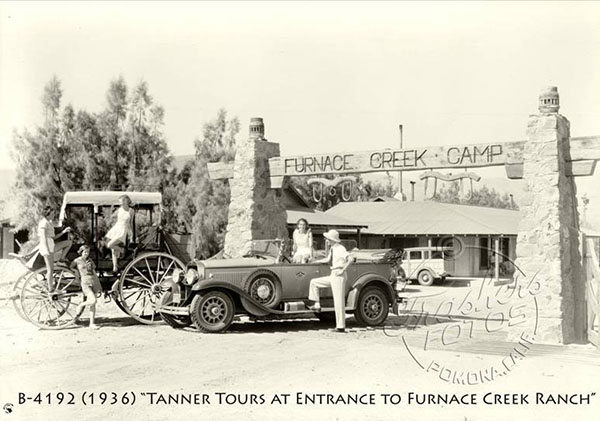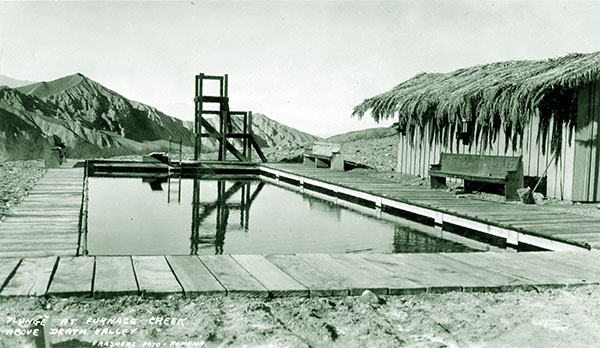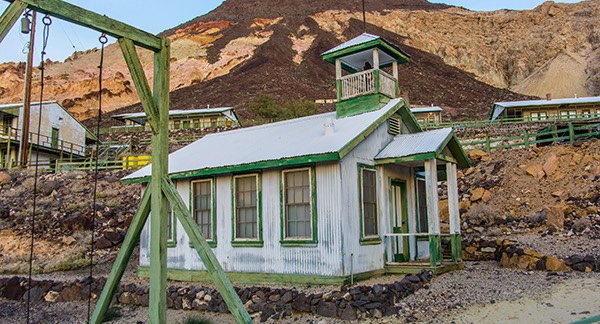Nearly a century ago, our leaders had a bold vision for Death Valley, home to initial U.S. Borax mining operations.
These visionaries recognized Death Valley’s beauty and wanted to share it with the world by attracting tourists. In addition, we wanted to protect the land by getting a National Parks designation.
Critics countered, saying Death Valley was too remote and too rugged. The intense summer heat would deter visitors.
To this, our entrepreneurial employees had two words: Challenge accepted.
A visionary mindset
Pragmatic reasons drove the need to establish a tourism industry in Death Valley.
In 1925, prospectors found a new form of borate in the Mojave Desert—named “rasorite” for Clarence Rasor who supervised the discovery. The purity of this new sodium borate ore, with its needle-like crystals, was remarkable. And, there was so much of it.
But mining this ore required moving operations more than 100 miles away from the Death Valley mining camps.
This move—to where our Boron operations still reside today—spelled almost certain disaster for the mining infrastructure we owned in Death Valley, including the Death Valley railroads. That is, unless it could be repurposed for tourism.
Julian Boyd, superintendent of the Death Valley mines, proposed a plan to executive Richard Baker outlining how to attract tourists. At first, Baker was reluctant. But recognizing that the Death Valley infrastructure otherwise faced irrelevance, he conceded and our company entered the tourism business.
Boyd and fellow engineer Harry Gower got to work—rapidly converting a bunkhouse at the Ryan mining camp into a tourist hotel. In 1927, the 12-room Furnace Creek Inn opened to travelers.

During their stay, travelers not only enjoyed the hotel’s amenities, but also the town of Ryan which featured atypical offerings for the desert including:
- A general store with fresh fruits, vegetables, and meat
- Movies playing once a week
- Community dances
A few years after opening, the Furnace Creek Inn upgraded its amenities, installing a swimming pool and a nine-hole golf course with views of Telescope Peak in the Panamint Mountain range. The uniqueness of the golf course—below sea level fairways in the desert—proved popular for many tourists.

The "plunge" at the Furnace Creek Ranch.
Tourism experiences turbulence
Unfortunately, soon after the tourism trade began, it fell victim to the Great Depression. With the country reeling from the global economic disaster, tourism became an afterthought.
No matter what they tried—publicity efforts to changing management style—the hotel struggled.
In 1933, Death Valley became a National Monument, a designation that some believed would not only protect the beautiful landscape, but also attract visitors. But it wasn’t until the late 1930s that the tourism business began to show signs of recovery.
Unfortunately, this period was short lived as World War II delivered another devastating blow to tourism.
As the war finally drew to a close, borates saw a jump in demand caused by new uses in glass applications. Rising demand left executives little time to manage boron mining and tourism operations properly. President James M. Gerstley started to search for a company better suited to run the hotel trade.
In the 1950s, the Fred Harvey Company bought our Death Valley hotel operations and took over management. However, we kept the rights to the nearby Borax Museum (not to be confused with the unaffiliated 20 Mule Team Museum in Boron, California).
Expanding Death Valley
Even after we sold the hotel business, our presence and influence on tourism in Death Valley remains strong.
In 1994, after we spent decades advocating for better protection of the area and donated a significant sum of land, Death Valley finally became a national park.
Our ties to the National Parks Service didn’t stop there. Over the past three decades we’ve donated:
- 110 acres along with mineral rights (2010)
- The original Ryan mining camp to the Death Valley Conservancy (2013)
- $50,000 from Rio Tinto to produce a documentary series on the park (2015)
 Ryan Mining Camp donated to the Death Valley Conservancy.
Ryan Mining Camp donated to the Death Valley Conservancy.Discover Death Valley
Interested in seeing this remarkable landscape for yourself? Plan a trip to Death Valley National Park and visit the Ryan Camp to experience the history of borax mining operations.
Or read this blog to learn more about U.S. Borax’s role in establishing Death Valley National Park.
Resources